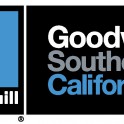
Goodwill Southern California Re-Models
The office tower and cafeteria, auditorium, and outlet center were added to the original building in the late 1960s and early 1970s.

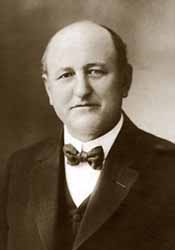
Helms was born near Malone, NY, on January 19, 1863. As a young man, he tried his hand at law and newspaper publishing, but felt called to the ministry. In 1889, he enrolled in Boston University Theological School. Helms and two fellow students requested that the City Missionary Society support them in opening a full-scale settlement house in the North End.
Although it wasn’t until 1915 that the term Goodwill Industries was coined, 1902 became known as the year Goodwill was born. With the help of Methodist Church funding, Helms went on to help establish Goodwill Industries organizations across the U.S., and by 1920, there were 15 Goodwills. [Today, Goodwill is officially a secular organization, but we still maintain cordial relations with the Methodist Church and many other churches, synagogues and temples.]
In Southern California, the first Goodwill was established by Katherine Higgins, who came to Los Angeles by train with her widowed mother in 1916. She was called the “Angel of the Plaza,” because she began Goodwill in the heart of L.A., on Marchessault Street, which runs into Olvera Street. Higgins gathered large burlap coffee sacks to collect goods and sell them in our first store. Goodwill Southern California employed many low-income immigrants, as in Boston, as well as low-income local residents. Higgins started health care programs for working parents, day care programs, and English as a Second Language classes.
From our humble temporary quarters, we moved in the early 1920s to the second floor of the “Baker Block”, a beautiful old building on North Main Street. Unfortunately that building was demolished in 1942. The land on which our L.A. Campus stands today was donated to Goodwill Southern California in the early 1930s by a generous couple who chose to remain anonymous. The facility was constructed from 1935 to 1938. The office/cafeteria section, auditorium and clearance center were added to the original building in the late 1960s and early 1970s.
Today, Goodwill Southern California operates over 80 stores, 46 attended donation centers, three campuses, five Career Resource Centers and three WorkSource Centers throughout Los Angeles (north of Rosecrans Ave.), Riverside and San Bernardino counties

The office tower and cafeteria, auditorium, and outlet center were added to the original building in the late 1960s and early 1970s.

Designed by Joseph Selame, the smiling G becomes the universally recognized Goodwill logo.
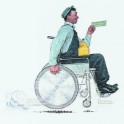
Norman Rockwell gives Goodwill the much-loved painting, “The Paycheck.”

A Goodwill public relations director asks Milton Caniff to draw a cartoon. The result is “Good Willy,” who becomes a beloved and well-known symbol of Goodwill efforts.
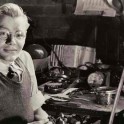
Goodwill becomes known for helping people with disabilities through job training
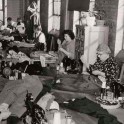
The attack on Pearl Harbor galvanized Americans and Goodwill. Goodwill adopts a new slogan – Salvage for Victory.
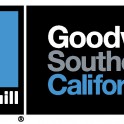
The land on which our L.A. Campus stands today was donated to Goodwill Southern California in the early 1930s by a generous couple who chose to remain anonymous. The campus was built on this location from 1935 to 1938.
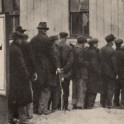
Goodwill is able to help thousands of people who become destitute after Wall Street crashes.
Goodwill expands services into the Inland Empire.

This popular Goodwill slogan is put to use to publicize Goodwill’s efforts to give people hope and independence through work.
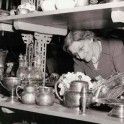
An exciting time when purchased donations top $1 million for the first time ever!

Goodwill Southern California moves to the second floor of the “Baker Block”, a beautiful building on North Main Street.
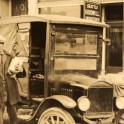
With the Methodist church backing expansion, by 1920 there were 15 Goodwills, including Morgan Memorial. In subsequent decades, the relationship with the church would gradually lessen as Goodwill sought leaders from outside the ministry, and as federal funding requirements made it necessary for Goodwill to become a more secular organization.

That day, 200 shoppers purchased goods totaling $126. In 2001, revenues from retail operations and other sources of income amounted to $145 million. Today, Goodwill Southern California operates 72 retail stores, 44 donation centers, 4 WorkSource centers, and 23 job service sites including 3 multi-service campuses, throughout Los Angeles, Riverside and San Bernardino counties.
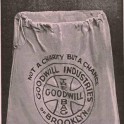
Representatives from a workshop in Brooklyn, NY, come to Boston to learn Helms’ techniques. They adopt the Morgan Memorial way and Helms adopts their name – Goodwill Industries
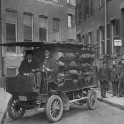
Four-wheeled motorized trucks are first put into service for Goodwill
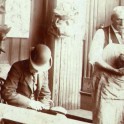
Reverend Edgar J. Helms, a Methodist minister and founding father of Goodwill Industries, with the help of his congregation, collected used household goods and clothing being discarded in wealthier areas of the city, then trained and hired the unemployed or bereft to mend and repair them. The products were then redistributed to those in need and those who helped to repair them.
